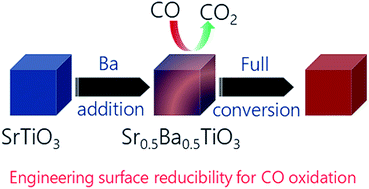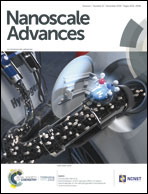Ba-addition induced enhanced surface reducibility of SrTiO3: implications on catalytic aspects†
Abstract
Surface reducibility engineering is one of the vital tools to enhance the catalytic activity of materials. A heavy redox treatment can be utilized to affect the structure and surface of catalytic materials. Here, we choose SrTiO3 (STO) with a cubic perovskite structure as a system to induce oxygen vacancies by using nascent hydrogen from NaBH4 leading to a heavily reduced version of SrTiO3 (RSTO). To further understand the surface reduction and its dependence on foreign-ion (Ba) incorporation into SrTiO3, Sr0.5Ba0.5TiO3 (SBTO) and BaTiO3 (BTO) are synthesized using a facile hydrothermal method. The reduced version of the pristine and mixed oxide shows distinct optical absorptions, indicating oxygen vacancy-mediated reducibility engineering. Detailed CO oxidation experiments suggest the order of activity over the as-prepared and reduced supports as STO > SBTO > BTO and RSBTO > RSTO > RBTO, respectively. The interesting observation of reversal of CO oxidation activity over STO and SBTO after reduction negates the assumption of a similar intensity of reduction on the surfaces of these oxide supports. The fundamental aspect of surface reducibility is addressed using temperature programmed reduction/oxidation (TPR/TPO) and XPS.



 Please wait while we load your content...
Please wait while we load your content...